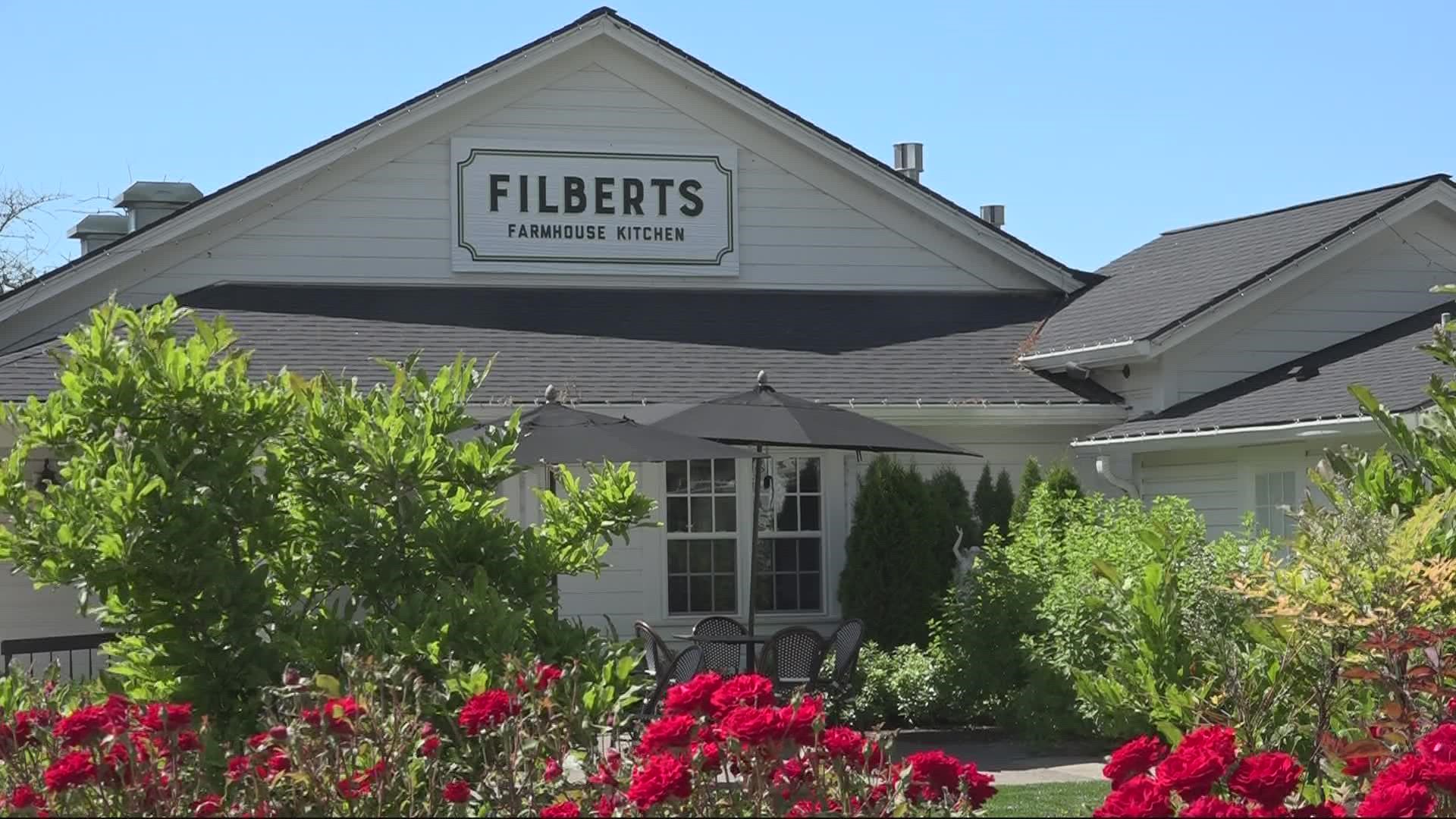AURORA, Ore. — Nestled behind gardens off Pacific Highway in Aurora sits an 1800s-style farmhouse-turned-restaurant. It’s 2 o’clock on a Wednesday afternoon, the start of lunch service, and the busiest time of day for employees at Filbert’s Farmhouse Kitchen.
“This is certainly the most difficult part of my 30-year career, without a shadow of a doubt,” said general manager Aaron Wolfe.
The family-owned restaurant opened just one year before the pandemic hit.
“We were exceptionally successful in that first year, and then as February hits and then everything else that hit after that was really, really tough,” said Wolfe.
The pandemic restrictions have eased off, but new problems have cropped up that prevent a return to the kind of high-flying conditions the restaurant enjoyed in 2019.
Since reopening after the peak of the pandemic, Wolfe said the restaurant has increasingly been feeling the effects of inflation. At this point, overall food costs are up at least 20%.
“Food prices became very noticeable right about then," he said. "It was a little out of control.”
In one example, the restaurant now spends $5,200 a month for root vegetables, which is about $2,000 more than what used to be typical.
That increase is being felt in nearly every kitchen across Oregon.
“Restaurants, just like consumers, are dealing with an incredible challenge,” said Jason Brandt, the president & CEO of Oregon’s Restaurant and Lodging Association.
According to the group's records, the state’s wholesale food costs have gone up 18% each year since 2020, the highest increase in the past 50 years.
Records also show that in the past two years, about 750 out of Oregon's roughly 10,000 restaurants have shuttered due to inflationary strains and the pandemic.
“Restaurants are out there figuring out a way to make it work, trying their hardest to survive,” said Brandt.
“Restaurants are just charging what they have to charge to maintain cash flow,” added Wolfe.
Filberts Farmhouse Kitchen has consolidated its menu by 60% and raised the price of each item. Salmon, for example, has gone from $28 to $38.
“It’s a living document,” Wolfe said of the menu. “We have to constantly change it to make sure that we’re being responsible to the ownership and to the guests. It’s a two-way street.”
The restaurant has also consolidated business hours, opening only during the busiest times.
“For every dollar of food and drink we sell, 95 cents of that dollar goes back into the food, the employees that work there and the place,” explained Brandt.
“We’re just trying to find a way to balance the costs its very challenging,” added Wolfe.
The fear for some restaurant owners isn’t about whether or not they can stay in business, but that if this trend continues, customers will stop going out to eat altogether putting the future of this industry in jeopardy. Wolfe said he has a message for customers who are frustrated by the rising prices.
“I completely understand," he said. "I hate filling up my gas tank. I don’t go out as much either, but the only thing I can say to you is we want to be here for you in two years when things are better, in six months when things are better, in 10 years when things are better, and the only way that we will be there and survive to that point is that we charge what we have to charge now, otherwise nobody would be here.”

